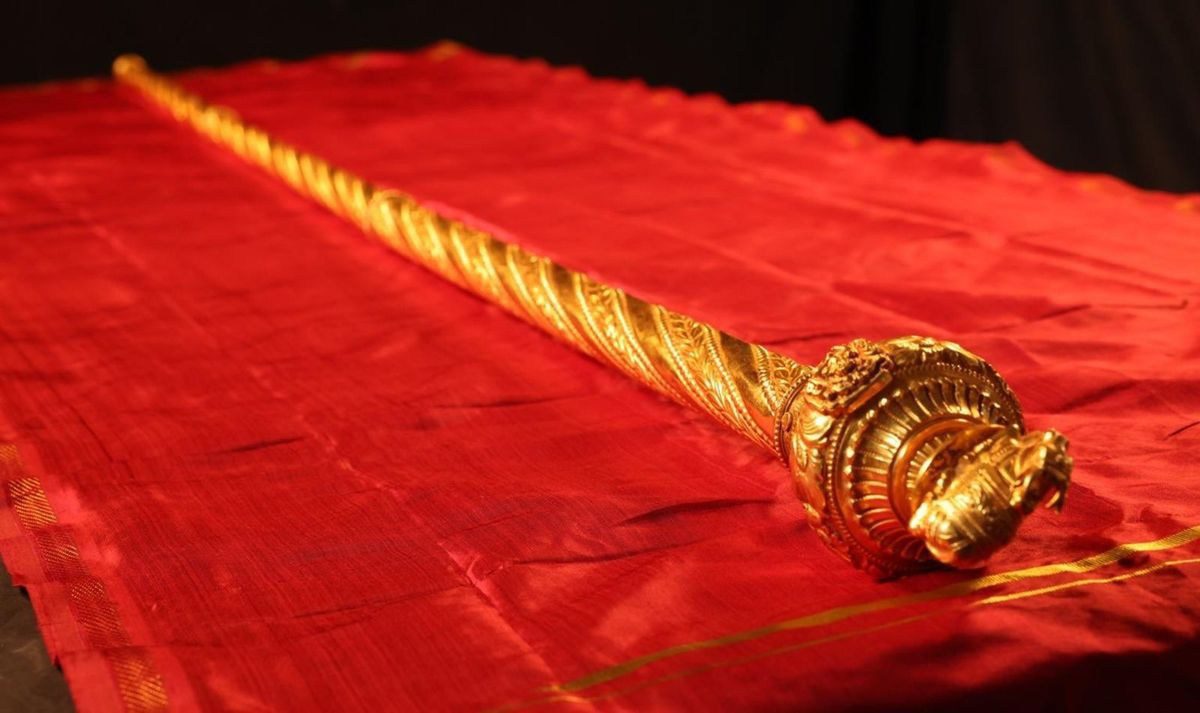Home Minister Amit Shah has declared that a historical Sengol, symbolizing the transfer of power from the British, will be prominently installed at the upcoming Parliament Building.
The new Indian parliament building is ready to start its journey of hosting the top lawmakers of the country on the 28th of May 2023.
As confirmed by Union Home Minister Amit Shah, Prime Minister Narendra Modi will position the revered ‘Sengol’ (scepter) adjacent to the Speaker’s seat, symbolizing its historical significance.
Shah emphasized the significance of the golden ‘Sengol’ as a historical symbol of Independence, representing the transfer of power from the British to the Indians.
Origin of the Sceptor as a symbol of the transfer of power from the British Empire to India
According to various historical accounts and news reports, the origin of the ‘Sengol’ can be traced back to a series of events initiated by Lord Mountbatten, the last Viceroy of British India.
During conversations about India’s impending independence, Lord Mountbatten posed a direct inquiry to Prime Minister Nehru regarding the symbolic representation of power transfer.
After being asked by Prime Minister Nehru about a symbol to mark India’s transfer of power, he sought advice from C Rajagopalachari, the last Governor General of the country.
Rajagopalachari, also known as Rajaji, shared the Tamil tradition of a high priest presenting a scepter to a newly crowned king as a symbolic gesture of power transition. He suggested that this tradition, observed during the Chola dynasty, could serve as a significant symbol of India’s freedom from British rule.
Consequently, Rajaji took on the responsibility of procuring a scepter for this historic moment.
Charged with the challenging responsibility of acquiring the scepter that would symbolize India’s Independence, Rajaji reached out to Thiruvaduthurai Atheenam, a prominent religious institution in present-day Tamil Nadu.
The spiritual leader of the mutt at that time willingly took on the task.
The Chola connection
During the Chola period, the Sengol held enormous importance in the coronation ceremonies of kings.
It served as a ceremonial spear or flagstaff that featured elaborate carvings and complex decorative elements. The Sengol was considered a sacred emblem of authority, representing the transfer of power from one ruler to the next.
The Chola dynasty was renowned for its extraordinary contributions to architecture, arts, and patronage of literature and culture. The Sengol emerged as an iconic symbol of the Chola reign, symbolizing the power, legitimacy, and sovereignty of the Chola kings.
In current times, the Sengol continues to be highly reputed and holds deep cultural importance. It is venerated as a symbol of heritage and tradition, serving as an integral part of various cultural events, festivals, and significant ceremonies.
The presence of the Sengol helps to honor and pay tribute to the rich history and legacy of Tamil culture.
The physical appearance of the Scepter
The ‘Sengol’ was crafted by Vummidi Bangaru Chetty, a prominent jeweler in what was then known as Madras.
This remarkable scepter measures five feet in length and features a ‘Nandi’ bull at the top, representing the concept of justice.
As per reports, a senior priest from the mutt initially presented the scepter to Mountbatten, only to retrieve it shortly afterward.
The scepter was then cleansed by sprinkling it with Ganga Jal (holy water). It was carried in a procession to Prime Minister Nehru and delivered to him approximately 15 minutes before midnight, signifying the moment of India’s Independence.
Accompanying this significant event, a special song was composed and performed. At around 10.45 PM on August 14, 1947, late Prime Minister Pandit Jawaharlal Nehru received this Sengol from Tamil Nadu, and in the presence of several senior leaders, he accepted this as a symbol of achieving independence.
It is a symbol of a transition of power from the Britishers to the citizens of India.



